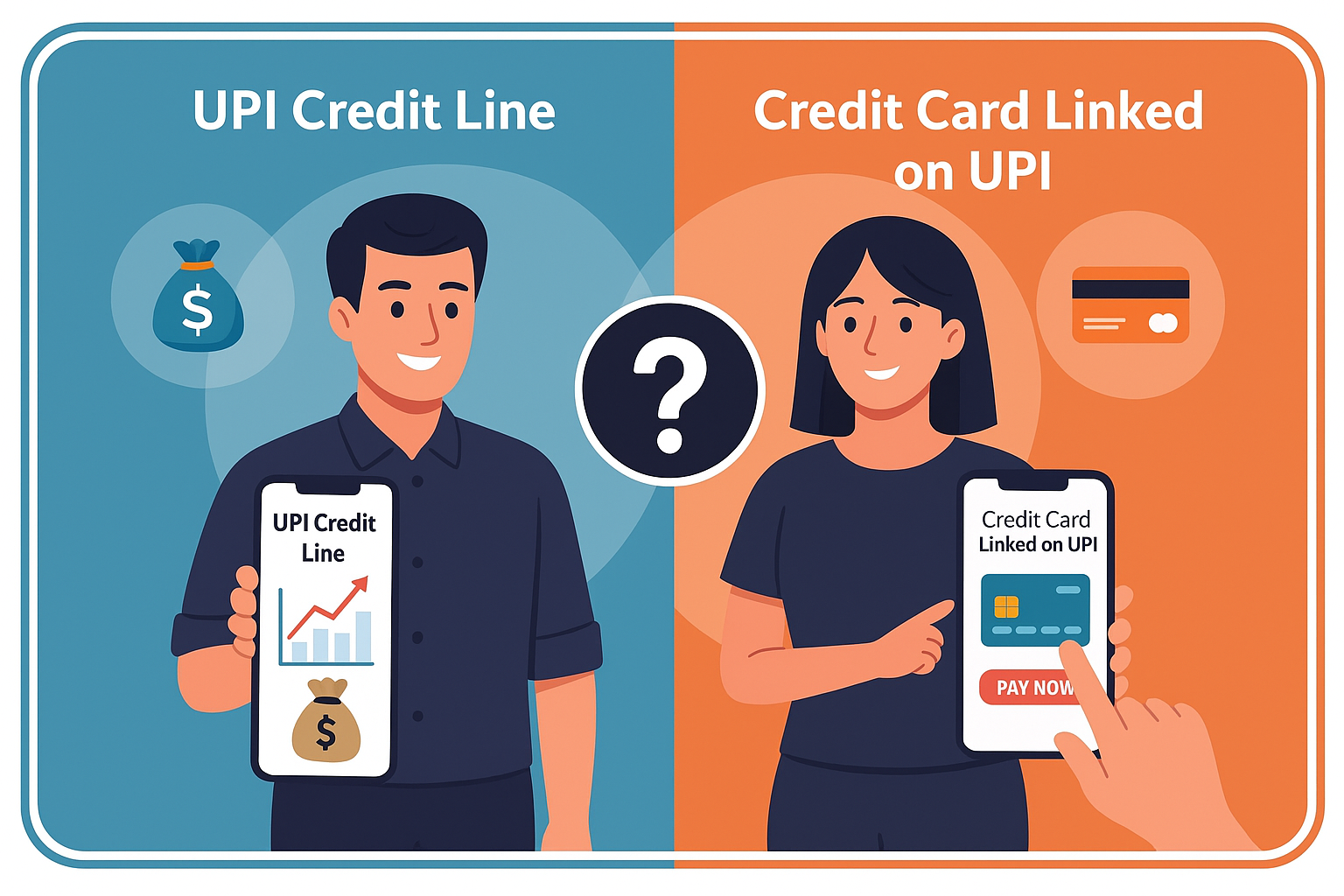In today’s fast-paced world, managing finances efficiently is crucial. Unified Payments Interface (UPI) has emerged as a popular method for making payments in India. It allows you to transfer money directly from one bank account to another using a mobile device. Alongside UPI, there are credit options available to help you manage your expenses more effectively. Two common choices are the UPI credit line and a credit card linked on UPI. Understanding the differences between these options can aid you in making the right financial decision.
Understanding UPI Credit Line
What is a UPI Credit Line?
A UPI credit line is a financial facility that allows you to borrow money through UPI transactions. Essentially, it acts as a credit limit assigned to you by a lender, enabling you to make purchases even if you do not have sufficient funds in your bank account at that moment. This credit can be used for various transactions, just like your regular UPI payments.
How Does a UPI Credit Line Work?
When you opt for a UPI credit line, the lender assesses your financial history and assigns you a specific credit limit. You can then use this limit to make payments via UPI. The amount you borrow is expected to be repaid within a set timeframe, usually with interest. The process is simple:
- Apply for a Credit Line: You can apply through a financial institution that offers this service.
- Receive Approval: Once your application is approved, you will receive a credit limit.
- Make Transactions: Use UPI to make payments up to your credit limit.
- Repay: Ensure timely repayment to avoid additional charges.
Benefits of Using a UPI Credit Line
- Convenience: You can make payments instantly without needing cash or funds in your account.
- Flexibility: You can borrow money as needed, making it suitable for unexpected expenses.
- Quick Access: The application and approval process is often faster compared to traditional loans.
Understanding Credit Card Linked on UPI
What is a Credit Card Linked on UPI?
A credit card linked on UPI allows you to use your credit card for UPI transactions. This means you can pay for goods and services using your credit card through the UPI app, making it easier to manage your spending while enjoying the benefits of credit.
How Does a Credit Card Linked on UPI Work?
Linking your credit card to a UPI app is straightforward. Here’s how it typically works:
- Link Your Card: You can link your credit card to your UPI account via the app.
- Make Payments: When making a payment, select your credit card as the payment method.
- Repayment: At the end of your billing cycle, you receive a statement that outlines your spending, and you are required to repay the borrowed amount.
Benefits of Using a Credit Card Linked on UPI
- Rewards and Cashback: Many credit cards offer rewards or cashback on purchases, which can be beneficial.
- Build Credit History: Regular use and timely repayment help build your credit score.
- Emergency Access: A credit card can provide additional financial relief in emergencies.
Key Differences Between UPI Credit Line and Credit Card Linked on UPI
Interest Rates and Fees
- UPI Credit Line: Typically, the interest rates on a UPI credit line can vary based on the lender’s terms. They may charge higher rates compared to traditional credit cards.
- Credit Card Linked on UPI: Credit cards usually have fixed interest rates and may offer introductory 0% APR periods. However, late payments can incur hefty fees.
Repayment Options
- UPI Credit Line: Repayment terms are usually more flexible, allowing you to pay back the borrowed amount over a specific period.
- Credit Card Linked on UPI: You are required to pay at least a minimum amount each month, with the full balance due by the due date to avoid interest.
Credit Limits
- UPI Credit Line: Your credit limit is determined by the lender based on your financial profile and may be lower than traditional credit cards.
- Credit Card Linked on UPI: Credit limits can be higher, depending on your creditworthiness and the card issuer.
Factors to Consider When Choosing Between UPI Credit Line and Credit Card
Your Spending Habits
Consider how you typically manage your finances. If you often need to borrow small amounts for short periods, a UPI credit line might be suitable. Conversely, if you prefer to use credit for larger purchases and enjoy rewards, a credit card linked on UPI could be better.
Financial Goals and Needs
Think about your long-term financial goals. If building a credit history is essential for you, a credit card linked on UPI may offer more advantages. However, if you need a flexible borrowing option for immediate expenses, a UPI credit line could serve you well.
Emergency Financial Situations
In times of financial emergencies, having quick access to funds is crucial. A UPI credit line may provide faster cash flow, while a credit card linked on UPI allows you to make purchases instantly without immediate repayment.
Conclusion: Making the Right Choice for Your Financial Needs
Choosing between a UPI credit line and a credit card linked on UPI ultimately depends on your individual financial situation and preferences. Consider your spending habits, financial goals, and the flexibility you need. Both options have unique benefits that can help you manage your finances effectively. By understanding each option, you can make an informed decision that best suits your needs.



